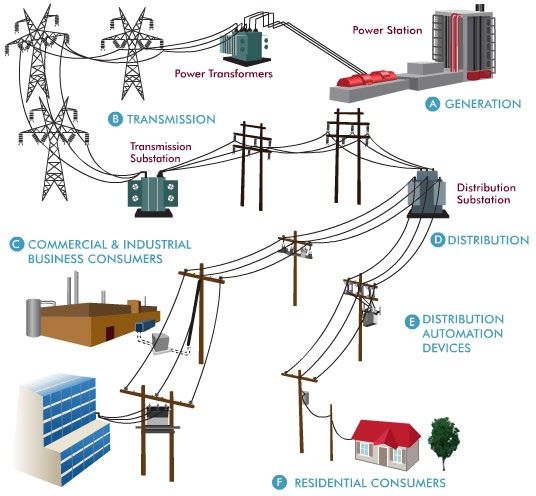



In the property world, few topics are more important yet less understood than the national power grid. Whether you're a developer seeking to connect a new build to the grid, a landlord managing multiple rental units, or an investor evaluating energy resilience, understanding how the UK’s electricity system works is crucial.
This guide, curated by Fraser Bond, offers a clear explanation of the national power grid, its components, and its implications for real estate development, management, and strategic investment across the UK.
The national power grid is the vast network of infrastructure responsible for transporting electricity from generators to homes, commercial buildings, and public infrastructure across the UK. It ensures that energy generated from diverse sources—such as gas, wind, nuclear, and solar—is delivered safely and reliably where it’s needed.
The UK grid comprises four main layers:
Generation – Where electricity is produced (e.g. power stations, wind farms)
Transmission – Where high-voltage electricity is moved across long distances
Distribution – Where power is stepped down and delivered locally
Supply – Where energy retailers sell electricity to end users
National Grid Electricity Transmission (NGET):
Owns and operates the high-voltage transmission network in England and Wales.
Also manages the electricity system across Great Britain in real-time via the Electricity System Operator (ESO).
Scottish Power Transmission and Scottish Hydro Electric Transmission:
Handle high-voltage transmission in Scotland.
Distribution Network Operators (DNOs):
These companies operate the lower-voltage networks delivering electricity to homes and buildings. Examples include:
UK Power Networks (London and South East)
Western Power Distribution (Midlands, South West)
Northern Powergrid (North East)
Electricity Suppliers:
Companies like EDF Energy, Octopus Energy, and E.ON purchase electricity and sell it to customers through tariffs.
Power is generated at power stations or renewable facilities (e.g. wind farms).
Electricity enters the transmission network, moving through overhead lines or underground cables at very high voltages (up to 400,000 volts).
Substations step down the voltage and transfer power to the distribution network.
Distribution cables deliver electricity to homes, offices, and industrial buildings at usable voltages (230V–400V).
End users receive electricity through their chosen retail supplier, who handles metering and billing.
Before beginning any new construction project, developers must confirm whether the local grid can support the expected energy load. Lack of grid capacity can:
Delay planning approvals
Add costs for substations or upgrades
Affect the viability of large schemes
Fraser Bond assists clients in navigating grid assessments and energy feasibility studies as part of project due diligence.
Developers must apply to the DNO for grid connection early. Depending on the location and capacity, it may take several months to secure access. Understanding the local grid landscape can prevent costly delays.
The UK’s move toward net-zero carbon emissions means the grid is adapting to:
Greater demand from electric-only developments
Increased use of heat pumps and EV chargers
Decentralised power generation (solar, battery storage)
Fraser Bond stays ahead of these shifts and advises clients on energy strategy integration across portfolios.
National Grid and the ESO are investing heavily in grid innovation, including:
Smart Grid Technology: Real-time monitoring and demand response
Flexibility Markets: Allowing properties to sell unused energy back to the grid
Regional Grid Upgrades: Especially in high-growth areas like the Southeast, Manchester, and Greater London
These developments will significantly influence property values, energy costs, and building design requirements over the next decade.
We don’t just focus on property—we understand infrastructure. Fraser Bond’s energy-aware consultancy services help:
Developers secure early grid connections
Investors evaluate energy resilience in target areas
Landlords meet EPC and MEES regulations through smarter supply integration
Property professionals leverage the grid for long-term value creation
With our insight, you’re better equipped to align your real estate strategy with the evolving national energy landscape.
The national power grid may seem like a background utility, but in practice, it shapes the future of real estate development, pricing, and sustainability in the UK. From planning permissions to energy compliance, understanding how the grid works is now essential for property professionals.
Fraser Bond remains committed to helping clients navigate the technical and strategic dimensions of real estate—ensuring they stay ahead in an increasingly energy-driven property market.